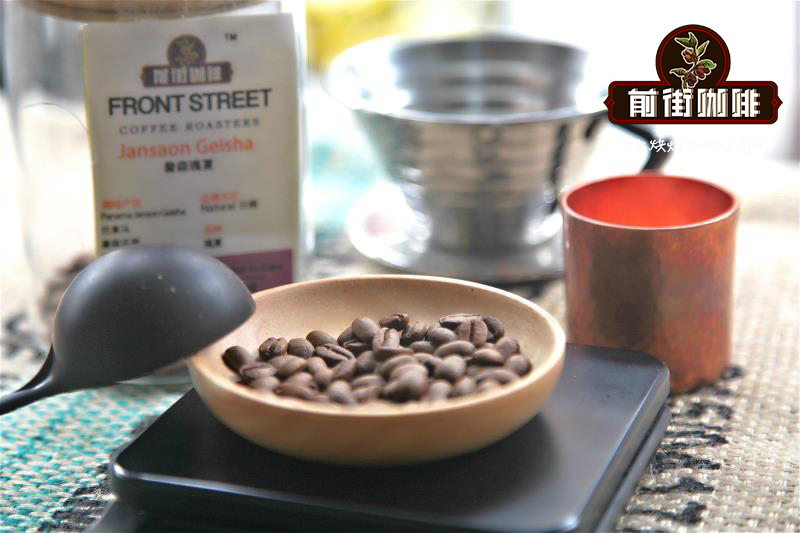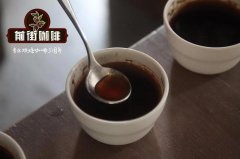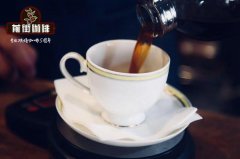Where is the coffee bean of the best quality? where is the coffee bean produced in the best country?

Professional coffee knowledge exchange more coffee bean information please follow the coffee workshop (Wechat official account cafe_style)
What is the best coffee in the world? Is the most expensive coffee the best coffee? Does the best coffee taste the best? Or is it the most cost-effective? Or is it the best coffee that only a few people can drink? Wait a minute... To answer this question accurately, I estimate that even the best philosophers may not be able to answer it perfectly. Coffee is the world's largest-selling drink, and more than hundreds of millions of consumers enjoy the graceful aroma of coffee every day. If you ask them what is the best coffee at the same time, you may get at least millions of different answers.
Producing area, variety, altitude, planting and processing. Strictly speaking, the time node of the origin of boutique coffee should be marked by the establishment of the American Fine Coffee Association (SCAA) in 1982. In the previous trade of raw coffee beans, both varieties, producing areas and even coffee produced for several years were mixed and sold as commodities, with no so-called high quality and good price at all. Among them, of course, the most is the poor taste of the Robbins tower. Although all the big coffee chains in the world still use cheap Robusta coffee as their mainstream variety, they really can't stand in the coffee world as boutique coffee.
First of all, in terms of varieties, the varieties of coffee in the world are divided into two series:
One variety is a robusta species that is easy to grow. Its advantages are pest resistance, easy to grow, high caffeine and high yield, accounting for more than 70% of global production. The disadvantage is, of course, that the taste is rough; another variety is Arabica. The well-known blue mountain species, rose summer species, bourbon species and tin card species are all branches of the Arabica species. The characteristics of these varieties of coffee are suitable for planting in high altitude areas, weak resistance to diseases and insect pests and high requirements for growing environment. The result, of course, is that coffee is much more delicate and mellow than Robusta, and of course the price is much higher.
Secondly, let's talk about the impact of altitude on coffee quality in producing areas. From the perspective of high-quality coffee beans produced at present, the higher the altitude, the better the quality of coffee beans, the higher the production cost and the higher the price. Blue Mountain one in Jamaica is the most vivid example. However, there is no certainty. Kona and Cafu produced in Hawaii are due to their unique volcanic ash soil and high-quality coffee grown at low elevations.
Third, planting and processing; whether the cultivation of coffee beans is organic or chemical fertilizers and pesticides, of course, directly affects the quality of coffee beans. And the most important link should be the way the coffee fruit is handled is very important to the quality of raw coffee beans. The treatment methods are divided into sun exposure, water washing and honey treatment. With the development of science and technology, there will be more and more ways to handle coffee fruits. Because the individual taste preference is different, so the preference to the treatment method is also different, the difference also arises, also formed each kind of treatment way group competition.
Fourth, producing areas and competitions; the focus of good coffee should be here. As mentioned earlier, in the era of junk coffee before 1982, there was no concept of price difference between producing areas and varieties, and there was no distinction between the good and the bad. I personally think that 1996 was the first year of the era of coffee aesthetics. In 1995, seven coffee producing families in Panama jointly established the Panamanian Fine Coffee Association, and held the first BOP (short for BEST OF PANAMA) competition in 1996.
The "beauty" of top coffee depends not only on the variety and genes of coffee, but also on a series of climatic and human factors: for example, the high-altitude lava of South America precipitates into the soil that gives birth to it, and the grower calculates the best mature period to harvest coffee beans, and then choose the right methods, such as washing, drying, peeling, polishing, picking. Finally, there is a baking process like making a work of art.
END
Important Notice :
前街咖啡 FrontStreet Coffee has moved to new addredd:
FrontStreet Coffee Address: 315,Donghua East Road,GuangZhou
Tel:020 38364473
- Prev

What kind of coffee should I buy in Russia? what brand of black coffee tastes good in Russia?
Professional coffee knowledge exchange more coffee bean information Please pay attention to the coffee workshop (Wechat official account cafe_style) Russian coffee is a very high-calorie drink, most suitable for drinking in the cold winter, a cup of Russian coffee in the morning can immediately warm your whole body, to ensure a day of energy. But vodka is a strong liquor with a very high alcohol content, so people who can't beat alcohol don't want it.
- Next

What is the best variety of coffee beans? what kind of coffee beans is the best?
Professional coffee knowledge exchange more coffee bean information Please follow the coffee workshop (Wechat official account cafe_style) the world's best Arabica coffee beans are not listed in national order, because the biggest factor is personal preference. For example, some people may prefer the fullness and acidity of Kenyan coffee to the classic balance of Colombian coffee. Other people may not.
Related
- Beginners will see the "Coffee pull flower" guide!
- What is the difference between ice blog purified milk and ordinary milk coffee?
- Why is the Philippines the largest producer of crops in Liberia?
- For coffee extraction, should the fine powder be retained?
- How does extracted espresso fill pressed powder? How much strength does it take to press the powder?
- How to make jasmine cold extract coffee? Is the jasmine + latte good?
- Will this little toy really make the coffee taste better? How does Lily Drip affect coffee extraction?
- Will the action of slapping the filter cup also affect coffee extraction?
- What's the difference between powder-to-water ratio and powder-to-liquid ratio?
- What is the Ethiopian local species? What does it have to do with Heirloom native species?

